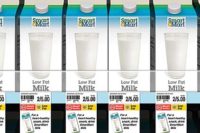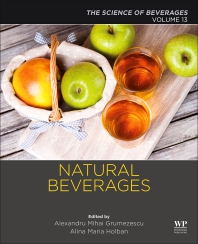Natural retailers pursue an organic appeal
Natural channel growth outpaces conventional retailers



Thirty-six percent of “health and eco” shoppers said that they think it is highly important to purchase organic beverages and juices, according to MamboTrack. (Image courtesy of Vital Juice Co.)



Approximately two out of three “health and eco” consumers identify selection of healthy and organic products or produce as the most important factor when deciding where to shop regularly, according to the August 2013 “Market Lifestyle of Health and Sustainability (LOHAS) MamboTrack Health & Natural Shopper Research & Beverage Market Industry Insight” report. These shoppers are seeking healthy natural and organic foods and beverages, ingredient lists that include special certifications such as non-genetically modified organism (GMO) and U.S. Department of Agriculture (USDA)-certified organic, as well as products made in the United States, according to Mambo Sprouts Marketing, the Collingswood, N.J.-based author of the report.
The natural and organic grocery channel provides these exact offerings, says Virginia Lee, senior research analyst for Euromonitor International, Chicago. “In terms of quality, in the case of Whole Foods Market, the buyers don’t allow a lot of foods and beverages with … artificial preservatives, flavors, colors, sweeteners and hydrogenated fat,” she explains. “So the consumer going into Whole Foods can be assured that the products in Whole Foods have been ‘vetted.’”
To further strengthen its commitment to quality, the Austin, Texas-based natural retailer announced in April a promise to achieve full GMO transparency. By 2018, Whole Foods Market plans to ensure that every product that contains GMOs is properly labeled, the company says. The company began evaluating its 365 Everyday Value line through its Non-GMO Project verification system in 2009 and currently sells 3,300 Non-GMO Project Verified products from 250 brands, it says. Through this expanded effort, the company plans to work with grocery suppliers in all categories as they transition to ingredients from non-GMO sources or clearly label products containing GMOs, it adds.
Beyond these qualities, most natural and organic retailers offer a wider selection of natural and organic foods and beverages than conventional grocery retailers, positioning them to compete with these other retail channels, says Bob Goldin, executive vice president of Technomic Inc., Chicago. In fact, the natural and organic retail channel is growing at 8-12 percent, which is two to three times the rate of traditional supermarkets, he says.
Specifically, Whole Foods Market reported a sales increase of 12 percent to $3.1 billion in the third quarter of 2013, which ended July 7. For the 40-week period also ending on the same date, the company reported a sales increase of 13 percent to $9.9 billion. As part of this growth, the company opened four new stores in the quarter and expects to open eight additional stores in the near future, it says.
Sprouts Farmers Market, Phoenix, reported net sales of $622.4 million for the second quarter of 2013, which ended June 30. These numbers represent a 45 percent increase compared with the same period of 2012, it reports. This retailer also experienced store growth this year, opening six new stores in the second quarter and five stores in the early portion of the third quarter, and it has plans to open two more stores before the end of the year, it says.
In all, natural food and beverage sales now stand at approximately $48 billion and are projected to increase to more than $60 billion by 2015, particularly as the economy strengthens and disposable income increases, according to Capstone Partners, Philadelphia.
Buying up beverages
In terms of natural and organic beverage purchases in natural and conventional channels, organic hot beverages are stealing the limelight, according to Euromonitor data. Organic green tea shows the fastest growth of organic beverages, increasing 10 percent in value to reach $43 million in sales in 2012, it reports. Interest in organic green tea specifically has been on the rise as more Americans become familiar with its health benefits, it explains. Overall, organic tea sales increased by 6 percent to reach $201 million in 2012, it reports.
Whole Foods Market recently partnered with Third Street Inc., Louisville, Colo., to launch a premium new line of fresh-brewed, ready-to-drink iced teas that are exclusively available at Whole Foods Market stores. The USDA-certified organic, Fair Trade, Non-GMO Project Verified teas are micro-brewed from tea leaves hand-picked from Nilgiri, India. Available in Unsweetened Black Tea and Unsweetened Green Tea varieties, the Third Street teas do not contain gluten, calories or added sweeteners.
Organic fresh coffee is the second-fastest-growing organic beverage, increasing 6 percent in value to reach $195 million in 2012, Euromonitor reports. Coffee has proven to be recession-resistant, as many consumers view the beverage as a necessary start to their days, it explains. In addition, coffee drinkers tend to be very brand loyal and choose to stick with their favorite brand despite price increases, it adds.
Of “health and eco” shoppers, 36 percent said that they think it is highly important to purchase organic beverages and juices, according to the MamboTrack report. More specifically, 64 percent said they place value on organic milk and 11 percent said the same for organic beer and wine, it reports.
Overall, sales of organic beverages grew by 5 percent to $943 million in 2012, mostly due to the recovering economy, according to Euromonitor data.
This strong interest in natural and organic products is a product of the growing availability of health and nutritional information through the Internet, Euromonitor’s Lee notes. The group of savvy shoppers absorbing this information and applying it to their grocery shopping and consumption habits includes members of all age groups, she says. For example, some parents are interested in purchasing organic products for their children to provide them with the health benefits they offer, she explains. As baby boomers age, they too are interested in switching to healthier lifestyles and opting for natural and organic products, she adds.
Approximately 41 percent of millennials report that they look for natural and organic brands to purchase to fill their pantries, according to the August 2013 report “Everything you thought you knew about Millennials might not be true,” by Concentric Marketing, Charlotte, N.C. This represents the second-highest consideration point for this age group’s brand selection, following loyalty to brands they consumed growing up.
Putting a price on healthfulness
According to the 2012 “Whole Foods Market Food Shopping Trend Tracker Survey” by Harris Interactive, Rochester, N.Y., on behalf of Whole Foods Market, 27 percent of Americans are devoting more than a quarter of their grocery dollars to natural and organic products, up 35 percent from four years earlier. Of the 2,274 adults surveyed, 71 percent said they prefer to buy natural and organic products when their prices are comparable to conventional products, and 73 percent said they do not want to compromise on the quality of the groceries they buy, regardless of price.
The survey also shows that consumers are willing to pay more for specific attributes in their grocery products. Approximately 47 percent said they are willing to pay higher prices for locally produced foods, and 32 percent said they are willing to pay more for foods with no artificial ingredients, preservatives or colorings.
However, the “Shopping For Health 2013” study by the Food Marketing Institute, Arlington, Va., reports that 62 percent of shoppers do not eat as healthily as they would like because it “costs too much to eat healthy foods.“
This pricing issue recently came up as Whole Foods Market opened a new store in Detroit’s Midtown neighborhood in June and announced in September its plans to open a new store in a low-income neighborhood on Chicago’s South Side in 2016 in an effort to target lower-income neighborhoods and food deserts.
“I see thousands of communities across the United States do not have fresh, healthy food; it’s just a fact,” said Whole Foods Market’s co-Chief Executive Officer Walter Robb in a panel discussion at Milken Institute’s Global Conference 2013 in April in Los Angeles. He noted that, in the case of the Midtown store, the company put the community first and really aimed for affordability and accessibility in order to give back to the low-income community.
After the opening of the Midtown store, Huffington Post reported that the prices in the Midtown store were less than the prices in the nearby Troy, Mich., store.
Since the recession, Whole Foods Market has made an effort to combat its high-priced reputation and increase the affordability of the products in its stores, Euromonitor’s Lee says. “They’re doing that through The Whole Deal coupon booklet where they provide manufacturer coupons that can only be used at Whole Foods, and they provide tips in the booklet for budget cooking [and] budget entertaining.”
This approach caters to the value-seeker shoppers, which represent approximately 64 percent of the American shopper population, according to the Whole Foods Trend Tracker survey. These shoppers are aware of prices, bargains, coupons and specials and shop accordingly, the survey notes.
Ultimately, any natural and organic retailer needs to consider the store’s demographic needs when choosing its product selections and price them fairly to ensure success in a given community, Euromonitor’s Lee says.
Another way to promote the value of natural and organic grocery items is through educational programs, Lee suggests. For example, Natural Grocers by Vitamin Cottage, Lakewood, Colo., offers free seminars by nutritional experts and hosts recordings of previous seminars on its website to educate its shoppers. By creating this educational relationship with its consumers, retailers also can build store loyalty, Lee adds.
The presence of passionate, knowledgeable employees in natural and organic stores also helps to educate consumers and offer them a shopping experience not readily duplicated in other channels, Lee says. “In terms of expertise, even at Whole Foods ... they hire people who are in general more passionate about healthy living and organic products, so you have a more educated and empowered workforce who are on their own eating a lot of these healthy foods and drinking a lot of these healthy beverages so they can offer their own personal health tips,” she says.
Through educational opportunities, affordable pricing and other initiatives, the natural and organic channel is setting itself up for continued healthy growth as more consumers realize the benefits of the unique products they offer, Lee says.
Related: Drinking in the natural benefits
Looking for a reprint of this article?
From high-res PDFs to custom plaques, order your copy today!










